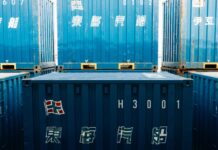
The supply of forces to combat through logistics functions as a well-integrated chain. The logistical requirements for military food delivery really differ substantially from civilian delivery because military operations need to factor in fast-movement deployments and distant operational areas alongside various dietary needs of soldiers. Logistical operations to deliver healthy meals to troops under all combat conditions remain challenging because they demand precise planning and delivery management. The delivery of resources becomes significantly more difficult when operations span across different time zones because sophisticated logistics methods must be implemented to stop service interruptions.
The Challenges of Military Food Logistics
Maintaining efficiency while being responsive to constantly shifting operating conditions is really likely to be the biggest challenge to military provision. Supply chain disruptions due to geopolitics, weather conditions or logistics failures can impact availability. Unforeseen circumstances always exist and hence backup planning must be available to cater to emergency rations and alternative procurement options.
Perishable products present another challenge, with complex preservation techniques and close control over inventory to minimize spoilage. Temperature-controlled transportation and storage must be used to transport products like dairy products, fruits and vegetables and meats and this can be really difficult in extreme conditions. In addition, remote bases have limited refrigeration facilities to offer, with other techniques like freeze-drying or vacuum-sealing being used to store items.
Innovations in Mobile and Remote Kitchens
When conventional dining facilities are not available, mobile kitchen facilities become a requirement. Modern field kitchens with high-tech cooking capabilities allow them to produce large quantities of meals even in distant locations. They have modular designs that can easily be broken down and reassembled to make mobile operations their best fit.
The DFAC shelter units provide a critical bridge between distant large-scale bases and front-line operations to feed troops with hot meals regardless of their location. The shelters are weatherproof and energy efficient with built-in solar power and water recycling facilities to enhance their sustainability. They also enhance meal diversity with the option of cooked meals as opposed to pre-packaged rations.
The Role of Technology in Military Food Distribution
To overcome such issues, military food logistics increasingly rely on technology. Artificial intelligence-based forecasting algorithms predict demand more accurately to minimize waste and have a steady supply of meals. Computerized tracking systems offer more visibility to supply chains so that real-time adjustments can be implemented to food delivery routes if needed. By embracing blockchain technology, military agencies can make their procurement of food more transparent to reduce fraud risks and improve efficiency.
Drones and autonomous vehicles have begun to be utilized in food delivery, particularly in risky areas. Unmanned aerial systems can deliver essential supplies to remote or combat-heavy areas without putting personnel at risk. These technologies assist in developing a more robust and flexible system of food logistics that can respond to shifting conditions on the battlefield.
Sustainability in Military Food Supply
Environmental concerns are forcing military institutions to adopt more environmentally friendly methods of handling food logistics. Reducing waste, making packaging more efficient and utilizing locally grown produce are some of the measures being taken. Some of the military divisions have started piloting composting programs to compost waste to be used as fertilizer in on-site agricultural programs.
Another effort is in more sustainable packaging. Traditional plastic-based products are being substituted with biodegradable ones to reduce the environmental footprint of military food operations. Some bases also have hydroponic crop systems that allow for locally grown fresh produce to be raised, reducing reliance on external supply chains and increasing nutritional content.
The Importance of Nutrition and Individualized Meals
Military rations are being changed to accommodate diverse dietary requirements. As troops require high-energy, nutrient-rich meals, menu planning is more complicated. The traditional military rations now have a more diverse range of foods like plant-based proteins and international cuisine to accommodate diverse tastes.
The provision of customized meal packages to cater to special dietary needs like vegetarian and allergen-free has boosted troop morale and performance. Nutritionists also have a more significant role to play in menu planning to ensure that soldiers receive optimum caloric input to perform their assigned roles—be it combat operations with high energy demands or desk jobs with low energy demands.
Lessons in Commercial Shipping and Aviation
Military logistics of food draw their inspiration from commercial sectors such as maritime transportation and aviation. These sectors have mastered meal preparation and delivery to effectively cater to mass operations. Food preservation methods, long-term storage facilities and mass catering logistics have been some of the lessons that have assisted in enhancing military food services.
For instance, commercial shipping uses centralized meal preparation facilities to distribute food more efficiently over extensive networks. The concept is being explored by militaries with a potential application through regional hubs of food to enhance efficiency. The pre-packaged meal strategy of the aviation industry with long-term shelf life has also motivated militaries to make their rations more palatable and nutrient-fortified.
The Future of Military Food Logistics
Future military logistics will continue to feature cutting-edge technology, including artificial intelligence-driven supply management for 3D-printed food items. The capability to print nutrient-fortified meals at will can revolutionize military nutrition by eliminating mass supply transportation.
Autonomous delivery systems like drones and robots can really soon become a game-changer in meal delivery on the battlefield. Some of the research divisions in the military have already begun experimenting with solar-powered meal production units that can produce high-protein meals using algae and other renewable materials. As dining operations become more modernized in the military, efficiency, sustainability and nutrition will continue to be top priorities to keep troops well-fed and mission-capable in all environments.





